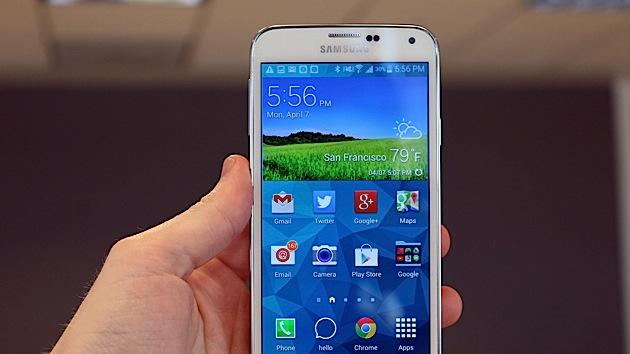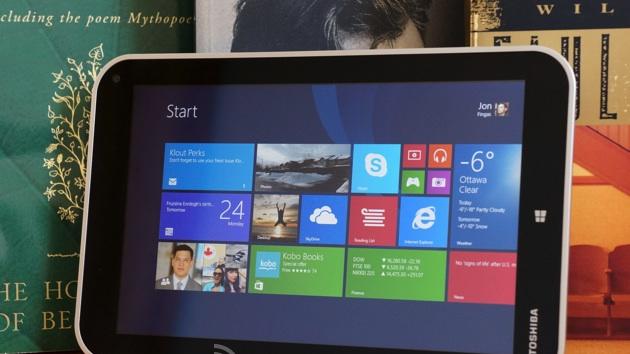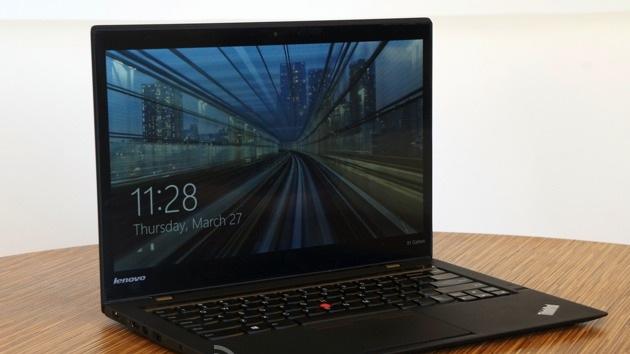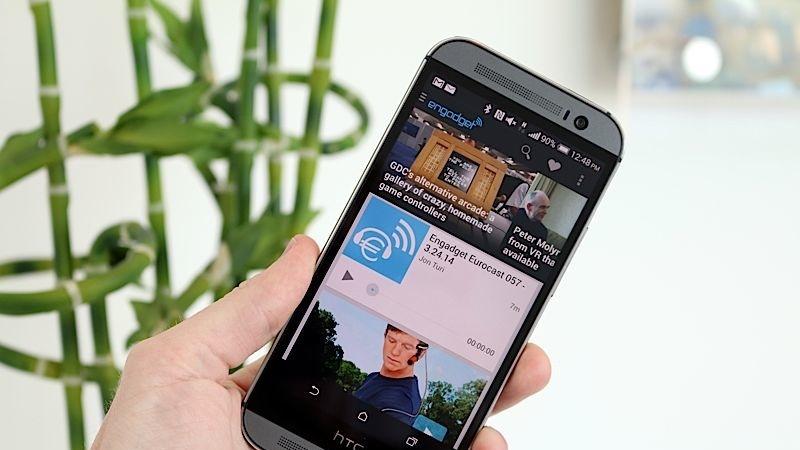spotlightreviews
Latest

ASUS Transformer Pad TF103C review: a speedy budget tablet with a few sacrifices
When it comes to ASUS, buying a full-size Android tablet has usually meant venturing past the $300 mark; even the Transformer Book T100 set you back $349 when it first came out, and that was considered a steal. That's no longer a problem in 2014. ASUS' new Transformer Pad TF103C costs $299 with the company's signature keyboard dock included, or as much as some smaller mid-range slates. While that's potentially a hefty bargain, it begs a few questions: Just what are you giving up to get that price? And is it worth the trade-off when you could likely snag a smaller, but more powerful tablet for less? As I've learned, you're making quite a few sacrifices in the name of a better deal. This is still quality hardware, but you have to know what you're in for.

OnePlus One review: a $300 smartphone has never looked so good
Look at your phone. If you can honestly admit that you love every single thing about it, I have good news: You can stop reading this review, since it won't have an impact on your happiness. But if there's even one thing you wish your smartphone could do better, it means you had to make compromises when you bought it. Everybody wants a perfect phone, but such a thing simply doesn't exist. So, we settle on a phone that has only 95 percent of the features we want, and that... kinda sucks. OnePlus believes it doesn't have to be this way. Its motto, "Never Settle," represents the fledgling Chinese company's mission to build and sell the perfect smartphone. Its first attempt is the One, a premium-looking device that has customizable firmware and top-shelf specs. Oh, and it'll sell for $299 unlocked and free of contract, which is even less expensive than Google's Nexus 5. Seems a little over-ambitious for a small startup with no official track record, doesn't it? Let's find out if the One is too good to be true.

Lenovo ThinkPad 8 review: sharp screen, worst-in-class battery life
Not long ago, I vowed to review every 8-inch Windows tablet. That's partly because they're popular, sure, but there was another reason, too: Their specs are so similar that you'd have to actually use one to know which is best. In a field full of same-y options, though, the Lenovo ThinkPad 8 would seem to stand out: It's the only one with a full HD screen, not to mention a 128GB storage option (good news for folks who'd rather not store stuff on a microSD card). Other bonus points include an aluminum casing -- a step above other tablet designs -- as well as optional 4G. Of course, premium doesn't come cheap; the ThinkPad 8 starts at $429, whereas competing models can be had for around $300. The question, then, is: Could it still be worth it?

Sony Xperia Z2 Tablet review: A top-tier slate with a familiar face
Oh, Sony. Its earliest Android tablet efforts were a little odd (and that's putting it politely), but the company eventually managed to get its act together. Last year's Xperia Tablet Z? Easily the finest Android slate that Sony's ever made. When it came time to craft an upgrade, though, Sony was faced with a choice: Should it try to push the envelope in a different direction? Or simply stay the course and apply a healthy dose of polish to an already-good device? Needless to say, it chose the latter. The new Xperia Z2 Tablet looks strikingly similar to its predecessor, albeit with a swapped-out set of components under the hood. The strange sense of drama that comes with a new product seems absent here. In a cynical age when new devices can fly or flop based on spectacle alone, Sony played it safe. It iterated. But is that such a bad thing? Is "iterating" really as yucky a word as we've all been led to believe? Let's find out.

Samsung Galaxy S5 review: a solid improvement, but don't rush to upgrade
Now that I've been testing it for a few days, let's see if the Galaxy S5 lives up to all those promises.

Amazon Fire TV review: the set-top that tries to do everything
Here's the thing about Amazon: We can't figure the company out half the time. Few things embody that quite as well as the Fire TV. The company is adamant that the set-top box is not a gaming console, but it's invested heavily in original game development for it and even produced a shockingly good gamepad accessory. Still, video games are just a "bonus." One of the pillars of the streaming-media box is supposed to be openness, but there's no denying that other services like Netflix are treated like second-class citizens here. They're invited to the party; they just better not outshine the host. The Fire TV may be the next step for Amazon as it tries to build its own ecosystem, but it's also yet another entry in the crowded streaming-media market. And the big question is: Do we need another? We've got TV set-tops for cable, satellite and fiber (at one time joined by a disc player for movies and maybe a game system or two). The next-gen game consoles do double duty as entertainment hubs, and there's no shortage of cheap boxes designed specifically to stream Netflix, HBO Go and Pandora. Add in smart TVs and the rise of pint-sized dongles, and the question of what to watch becomes how to watch. The Fire TV is trying to muscle out competitors with its $99 price and a strong focus on performance, search and openness. Now that we've spent a few days living with one, we can judge whether it's just another option among many, or truly a standout that finally fixes problems the others have so far ignored.

Toshiba Encore review: an 8-inch Windows tablet that struggles to stand out
Toshiba is no stranger to Windows tablets, but what we've seen to date has typically been targeted at businesses or has otherwise been... limited. In that sense, the Encore is something special. It's not just the company's first 8-inch Windows tablet -- it's the first aimed at a truly broad audience. That said, it faces stiff odds. Acer, Dell, Lenovo and others have comparable slates on the market, in many cases with similar features. Toshiba would have to do something truly out of the ordinary to stand out. And frankly, it doesn't. While the Encore is a worthy device, you'll have to be particularly enamored with its design to ignore its rivals. Read on to see what we mean.

Lenovo ThinkPad X1 Carbon review (2014): new, but not necessarily improved
Don't call it a business laptop. I mean, you could, but you'd be missing the point: Though the original Lenovo ThinkPad X1 Carbon was technically aimed at corporate users, it was good enough for us to recommend even to regular consumers. That was a year and a half ago, though: In the intervening months, the machine has gone without an update, save for the addition of an optional touchscreen. Finally, though, Lenovo went and refreshed it, bringing it into the modern age with fresh processors, a thinner and lighter design and an ultra-high-res 2,560 x 1,440 screen option. In addition to tweaking the original, though, Lenovo also overhauled the keyboard, adding an "adaptive panel" whose shortcuts change depending on what app you're using (yes, that means the traditional Fn buttons are out). That potentially controversial change aside, this clearly has the makings of another winner... right?

HTC One (M8) review: a great phone, even if no longer a game-changer
The HTC One was one of our favorite smartphones of 2013. It featured a gorgeous industrial design, a fantastic display, great camera and top-of-the-line performance. HTC poured its heart into it, as evidenced by nearly every aspect of the device. The phone exceeded nearly all of our expectations, but that also left a big problem: We now expect history to repeat itself. After all, if the original One was such a great device, its successor should, in theory, be even better, right? Of course it should be. But does this year's version of the One have what it takes? On paper, the answer is yes: It has a larger screen, offers two curious-looking rear camera sensors, boasts an improved version of HTC's Sense UI and features a chassis with even more metal. It appears, then, that there's a lot to love here, but it's difficult to take our breath away twice in a row. Here's what impressed -- and what didn't.



